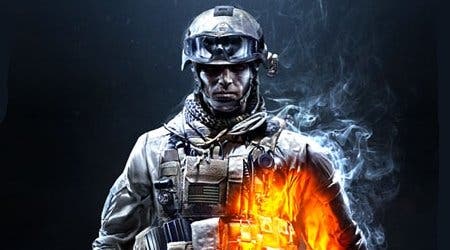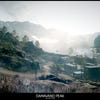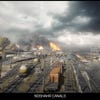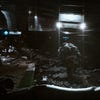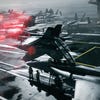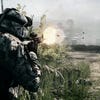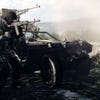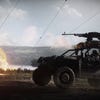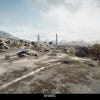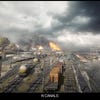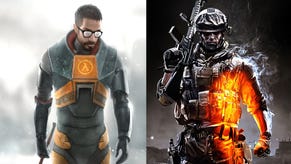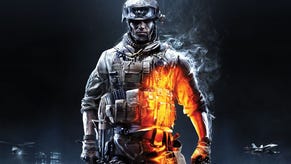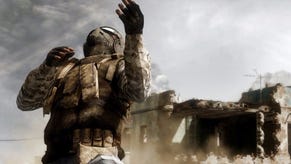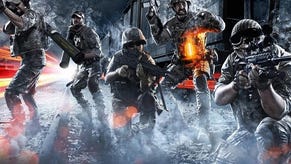Battlefield 3 Review
Hell is for heroes.
If imitation is the sincerest form of flattery, then the folks at Infinity Ward and Treyarch must be feeling pretty special right now. In retooling DICE's military multiplayer favourite as a direct competitor to reigning heavyweight champ Call of Duty, EA has constructed a package that echoes its rival in so many ways it's downright eerie. If Call of Duty is Bridget Fonda, then Battlefield just became Jennifer Jason Leigh.
Nowhere is this more obvious than in the single-player campaign, which rather appropriately occupies a disc all to itself on the 360. Only tangentially related to the multiplayer side of the game, and more concerned with the sort of Hollywood heroics that propelled Activision's franchise to the top of the tree, it's remarkable just how badly it sells the Battlefield brand.
It opens, ominously enough, with a quick-time event. Press A to jump onto a train. Press the right trigger to display a non-interactive animation of our hero, disgraced marine Sgt Blackburn, beating up an enemy. Press B to dive out of the train window, then hammer A to climb onto the roof. And so on.
Things pick up once the game starts properly, and we find ourselves in a flashback to Iraqi Kurdistan. Yet even here, the game doesn't trust the player to experience its lavishly designed corridors correctly. It's yet another military shooter that casts you as a follower, not a leader, your way ahead constantly dictated by AI partners who tell you exactly what to do and when. That's if they're not barging you out of the way because you've strayed into their rigid path, or wandering into your line of sight as you take a shot. "Friendly fire will not be tolerated" admonishes the game. Stupidity, however, seems A-OK.
No level illustrates this straitjacket design ethos better than Going Hunting, the third mission and one that introduces jets for the first time. Having hopped into the story of a completely different and almost entirely irrelevant character (another hand-me-down from COD's fractured campaigns), we're treated to a remarkable experience that uses the first-person perspective to the full.
You walk through the bowels of an aircraft carrier, being briefed as you go. The clank of boots on metal floors echoes beneath the sickly glow of electric lights. Then a door opens and suddenly there's the roar of the sea, wind and spray fills the air, and it's so tangible you can almost taste the salt. Climb into the cockpit, lower the canopy and you shrink in your seat, the claustrophobia almost unbearable. You go through the pre-flight routine, looking left and right to check the flaps and stabs. You can see the scuffs and scratches on the canopy, the cloud-dimmed light sparkling on the ocean. And then you're off, catapulted off the deck so fast that you physically feel the dip in your stomach as gravity tries and fails to pull you down.
It's amazing stuff, a true work of digital theatre, offering immersion and realism beyond anything we've seen in games before. It's also almost entirely non-interactive, and leads into a mission that starts disappointing and only goes downhill from there. You're not the pilot, it turns out. You're the co-pilot. Your job is to point and shoot at the enemy fighters as the plane goes through its scripted banks and rolls. Later on you get to take aim at ground targets, a duck hunt dressed up in a Tom Clancy uniform.
This is the weakness of Battlefield 3's single-player in a cockpit-sized nutshell. It's often so busy trying (and often succeeding) to impress you with immersive detail that it forgets to give you anything meaningful to do.
Even when the bullets fly and you're free to engage without hand-holding, the scenarios on offer fall firmly into the corridor mould. There may be small tactical considerations - do you use the cover on the left or the right? - but player agency has been squeezed into such a narrow space that it utterly fails to live up to the Battlefield legacy. Even Bad Company 2, the lovably cheesy Chuck Norris-styled spin-off that brought the series to consoles, knew well enough to throw in some larger battles where you could get a taste of the freedoms on offer in multiplayer. Here, you're boxed in and forced to follow the trail of breadcrumbs to the bitter end.
Perhaps it's for the best, as the one mission where the game opens out and allows you to experiment with an actual battlefield is also the one that makes the console architecture creak most alarmingly. It's called A Rock And A Hard Place, and even with both discs installed to hard drive, including the "HD pack", and a sizeable day-one patch, the texture pop on this level is gruesomely noticeable, along with brief stutters and hiccups. At one point my iron sights glitched, making it impossible for me to strafe right. Moments later, I was able to walk right through a tank.
Such issues aren't unique to this game, or even this genre, but they are problematic for a title that sells itself on technical superiority. Mostly, however, the single-player disappoints not for what it gets wrong - for better or worse, it's just following the popular template for its genre - but for what it doesn't even attempt to do. Namely, translating the unique Battlefield experience to a solo game.
The co-op missions make a better attempt at this, though they're limited in how successful they can be by weird restrictions. In-keeping with the game's Single White Female obsession with COD, these map almost exactly onto Modern Warfare's Special Ops missions: two-player challenges that put you in a tightly controlled scenario and ask only that you make it to the end alive.
There are only six co-op stages though (compared to 23 in Modern Warfare 2) and they're only playable online, via a clumsy lobby system, not locally. They're also heavily scripted, with enemies appearing in the same spots at the same points in every playthrough. That's not to say they don't have appeal, though. For one thing, vehicles get a look in during some co-op play, which gives them their own flavour. The second of the missions is helicopter-based, for example, with one player piloting and the other manning the guns as you provide air support to two marine units on the ground.
"Multiplayer is predictably - and thankfully - excellent."
When it works, it's fantastically good fun. When it doesn't, it's infuriating. You have no control over which role you'll be assigned, so if you end up in the gunner's seat with a muppet for a pilot, you'll crash and burn before the enemy even sees you. Alternately, if you're an ace pilot stuck with a gunner who couldn't hit a barn door from three feet away, you'll be failing anyway as the ground troops get decimated. As the following four co-op missions only unlock once you've cleared the previous ones, it can be a strange roadblock in an otherwise enjoyable distraction.
The biggest drawback with co-op is the scripted nature of the engagements. Even after just a few days' play, it was easy to plan ahead based on where the next wave would be coming from. Rather than a dynamic situation where co-operation is essential, as in Left 4 Dead, it becomes little more than a pattern-recall high-score game, where success depends largely on whether your partner has memorised as much of the challenge as you.
Which leaves multiplayer, which is predictably - and thankfully - excellent. It's here that DICE is strongest, so it seems wilfully perverse that the game hasn't distinguished itself from Call of Duty by playing to its strengths rather than expending so much effort copying a rival formula.
If Battlefield was a superlative multiplayer game in previous incarnations, it's never been better than this. The maps are larger and more intricately designed. The customisation options have never been deeper, the unlock tree never so flexible and rewarding. Even on a console where the graphics suffer and control is slower, it's dangerously addictive stuff.
It is, however, very much the same Battlefield that fans will be familiar with. Having stepped into the ring with Call of Duty, clearly nobody was about to risk trying any fancy new showboating moves. So instead we get a refinement of an already excellent system, with several new (or reintroduced) features that make the game both richer and more accessible.
Going prone is back on the menu, which will delight as many as it annoys. Nobody likes an invisible sniper, but equally it feels so natural to drop to the floor when bullets start flying that it's omission in Bad Company 2 still seems bizarre and unrealistic. Balancing this out is the inclusion of torch attachments and laser sights that can dazzle, along with suppressing fire. If bullets hit close enough, your vision blurs slightly, making it harder to aim. This means that newcomers who are yet to master the quick-snap iron-sight headshot can still contribute to a kill by keeping an enemy suppressed with old-fashioned spray and pray shooting.
Vehicles, too, have been tweaked. Minor damage repairs over time and they no longer explode so readily and must first be disabled. While in this state they catch fire and, much like a downed soldier, damage bleeds out until they explode. Engineers can patch them up in this time, or helicopters can deploy fire extinguishers to give them a fresh lease of life. It's a subtle twist but one that makes vehicles - both as a tool and a threat - more nuanced.
And, of course, there are the jets. These aren't as tricky as helicopters to master, but they are difficult to use effectively because of their speed. Mostly, at the moment, the jets seem to be playing a game all of their own overhead, while the ground combat continues oblivious. Presumably that will change as players get used to the new toys and begin deadly strafing runs. You can also spawn directly into available choppers and jets, removing the daft sniper-baiting queues that form at vehicle spawn points.
What still impresses most about Battlefield's multiplayer is how accommodating it is. With such a varied toolset and such large maps, there's less of the bullish machismo that blights other military shooters. It's more about teamwork, less about teabagging and headset smack talk. Levelling up is a satisfying ascent rather than a death-fuelled grind, your loadout improving alongside your skill.
It's about so much more than infantry shooting each other in the face. Each specialist class offers dozens of unique accessory selections, so the truly devoted can micromanage their career right down to the grip on their rifle. Equally, players who aren't much cop at shooting can drive, sneak or fly into battle and do their part in a way that feels comfortable. And, brilliantly, all approaches can work thanks to impeccable map design.
Operation Metro, the most COD-like of the maps and the one that was conspicuously chosen for the beta, stands alone as the odd one out with its uninspiring linear paths. All the others offer the sort of epic, multi-faceted theatres of war that make the Battlefield series so strong. Whether its the dense urban tangle of Seine Crossing, with its courtyards, alleyways and elevated interiors; the snaking ruins of Tehran Highway or the vast dusty expanses of Caspian Border, all the maps showcase the sort of considered design that imprints itself into your brain through natural play. Every dugout, vantage point and short cut, absorbed effortlessly because they work.
It's here where Battlefield's brutal and bloodied heart beats loudest, and it's here that players will inevitably spend most of their time. Shame, then, that the overall package is marred by a me-too campaign, filled with hollow bombast, and a co-op mode that feels undercooked.
Those who buy the game for multiplayer likely won't care that these elements aren't up to par, but what stings most is the thought of what DICE could have done to evolve and expand its multiplayer design skills if the mantra of "BEAT COD" hadn't been drummed so relentlessly into the development process. Battlefield didn't need to be more like Call of Duty to succeed, it just had to double down on what it was already good at. Hopefully that's a lesson that will be learned by the time Battlefield 4 roars into view.
